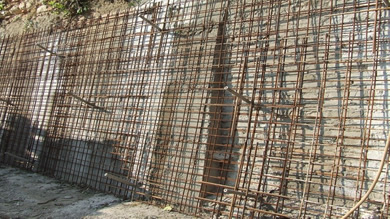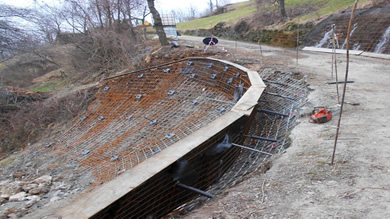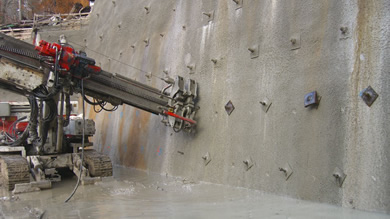
NAILED WALLS
The nailing (nailing) of the soil reinforcement techniques is mainly used to support excavation fronts and natural shoes.
With this technique, composite structures are realised that exploit the interaction between the ground and the collaborating inclusions.
The technique of ground nailing ("soil nailing" or "clouage des sols") consists in introducing reinforcements, the nails in fact, inside the soil with the function of absorbing the efforts that the ground under natural conditions would not able to endure.
These efforts can be linked to one or more of the following factors:
- For the geotechnical and mechanical characteristics (tensile stress);
- For exceeding the last values of the geotechnical and mechanical characteristics (shear stresses) due to anthropogenic interventions following the reinforcement phase (generally excavations).
Soil nailing is generally applied for the realisation of subvertical excavation fronts, of a height even higher than 10 m having a provisional or definitive character, or for the support of scarps and slopes of limited dimensions.
The origins of the nailing technique refer to an extension of the New Austrian Method for the excavation of tunnels; even if the nailing of the soil has aims and execution methods that are significantly different from those of the NATM, the two techniques generate, within the treated mass (rock or soil), a composite and mixed system, stable and characterised by deformation levels acceptable.
In the execution of the Spiked Walls the fundamental advantage of this technology lies in the "FLEXIBILITY" and "ADAPTABILITY" to new requirements that may arise during the execution phase by the designer of the work.
The technique in question presents, obviously, positive and negative aspects, inherent or if compared with similar techniques.
There are also limitations related to its applicability. As for the advantages, we can mention:
Economy - Small, light and silent equipment - Construction flexibility - "Massive" behaviour - Structural flexibility - Resistance to seismic loads





